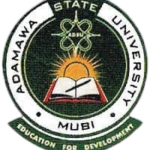Abstract
The Assessment of Heavy Metals in Water, Fish (Clarias gariepinus) and Sediments of Kiri Reservoir, Adamawa
State, Nigeria was conducted for the period of eight months from January to August, 2024. Data were collected from
three different Sites monthly in triplicate. Heavy metals were determined using Atomic Absorption
Spectrophotometer (AAS). Not all the heavy metals investigated were in measurable amount in water, Chromium
and Cadmium were below detection levels. Copper, Nickel and Lead were slightly above the recommended
permissible limits. All heavy metals investigated were in measurable amount in sediments. Cadmium, Chromium
and Lead in Sediments were beyond permissible level. Heavy metals in fish investigated revealed that copper, nickel
and lead were present in fish. The maximum value of Copper in fish did not exceed the allowable limit of 3.0 mg/kg.
The maximum values of nickel were within the recommended limits of 0.5-0.9 mg/kg. The maximum values of
Lead exceeded the maximum limit of 0.2 mg/kg. Therefore, Kiri Reservoir can be suitable for the survival and
growth of fish. Also then Assessment of heavy metals level in Water, Sediments and Fishes should be done
regularly to ascertain the healthy state of Kiri reservoir.

